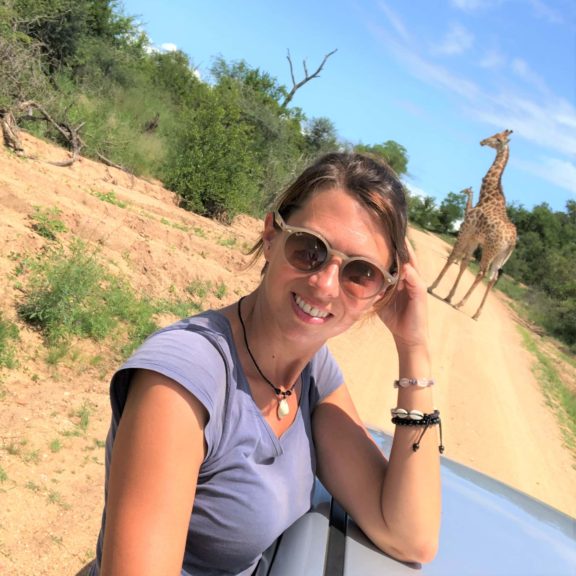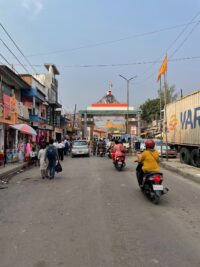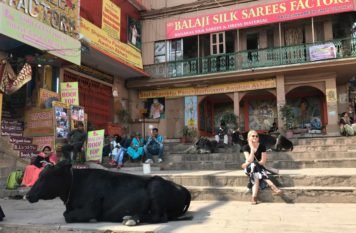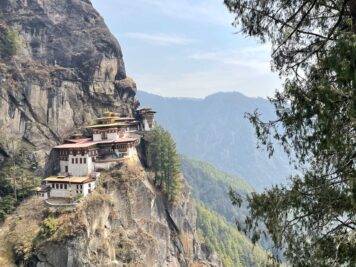We’d just got home from three months of travel between Cairo and Cape Town, and already knew we wanted to go back to Africa. Soon enough, we were flipping through guidebooks and searching around online, re-evaluating our old West Africa plans. We’d put these on the back burner a few years ago, discouraged by things like civil war, a couple of coups, and then ebola. But now, we read this part of Africa is stabilising, changing for the better and best of all, an exciting and not yet well-known destination. So we bought flights to Dakar, topped up our vaccinations and our supply of malaria meds, bought a generous supply of USD and Euros, and we were on our way.
Arriving in Senegal, we found the immigration officer napping under his desk. He crawled out to stamp everybody in, and so our trip began.
Dakar, the capital, turned out to be a pleasant surprise. We’d expected another overwhelming African city but once we’d dropped our backpacks off at a hotel and ventured out, we found it anything but. The streets were relatively quiet, dusty and scruffy, and traffic was thankfully low-key. In search of something to eat, we noticed that Norwegian cuisine has (believe it or not) had some kind of influence here:

We ordered hummus and baba ganouj, but it’s good to know Norwegian visitors to Senegal won’t have to starve.
But many of the visitors to this former French colony are from France, and the local people speak French, and it wasn’t long before we started to wonder if in all of our travels it has ever been this hard for us to communicate. We are relying almost entirely on vague hand gestures and ‘My French’ – which consists of a few greetings, days of the week, numbers, kinds of food (that’s pretty vital, actually) and some other random and totally useless words I can recall, such as ‘vernis a ongles’ (nail polish). ‘Oyv’s French’ is strictly limited to ‘Voulez-vous couchez avec moi ce soir’, so that’s not really coming in handy.
One of the things we did in Dakar was visit Ile de Goree, a small island just 20 minutes from the city by ferry. There are no cars there, only a little beach and sandy streets, and pretty colourful buildings slowly crumbling under the weight of trailing bougainvillea.



This peaceful, sunny island has a dark past: under the Europeans it was a slaving station during the 18th and 19th centuries. The most famous building is the Maison des Esclaves, where captives brought from all over Africa were kept in dungeon-like storerooms on the ground floor. A door in the back of the house opens directly onto the rocky shore and the ocean beyond.
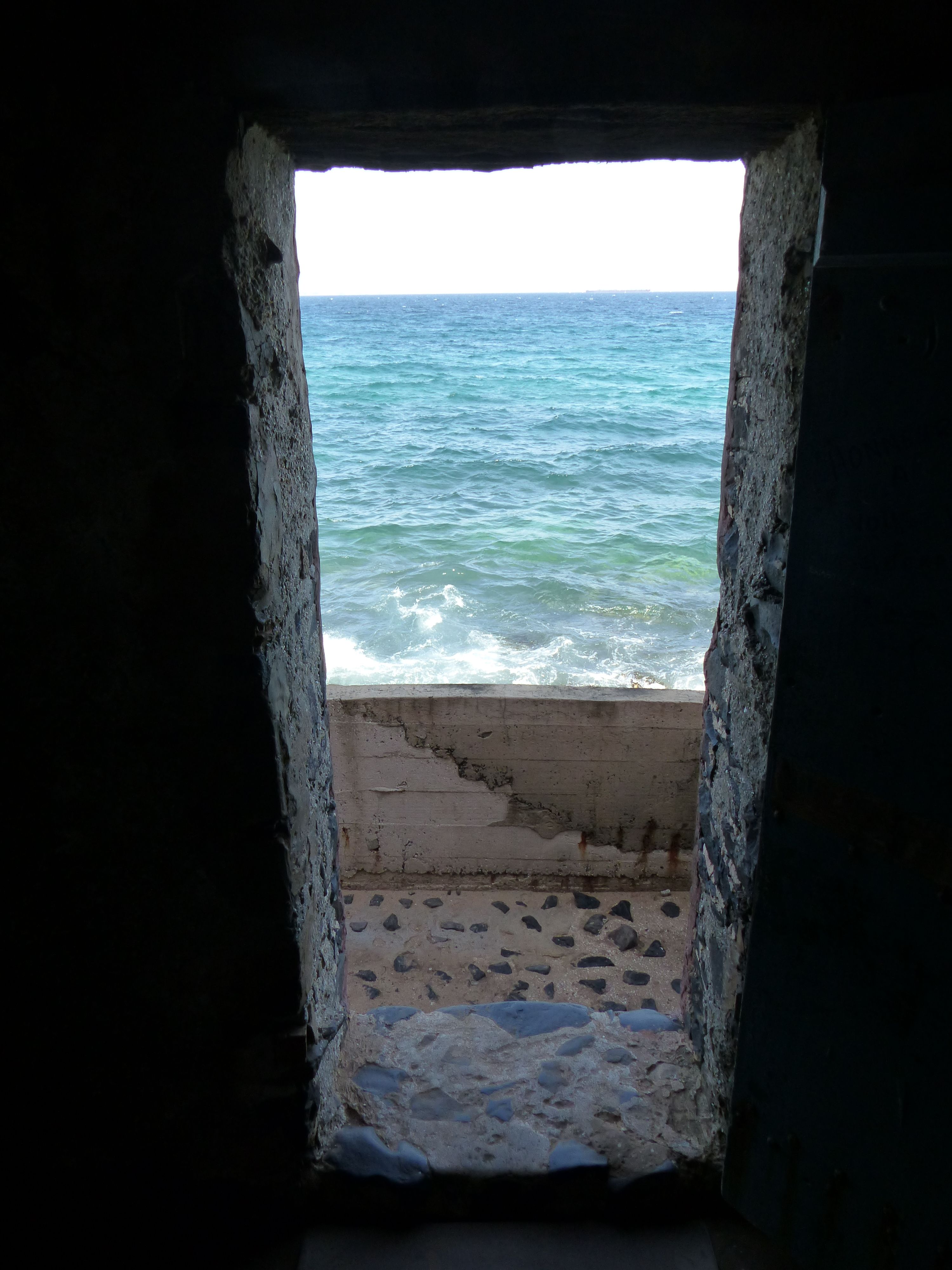
Although it’s unlikely that any people were actually loaded onto the slave ships from this door – the rocks would have prevented any ship coming close – the empty doorway now symbolises the haunting point of no return for the desperate people who caught their last glimpse of home through it, from the crowded ships delivering them into a life of slavery.
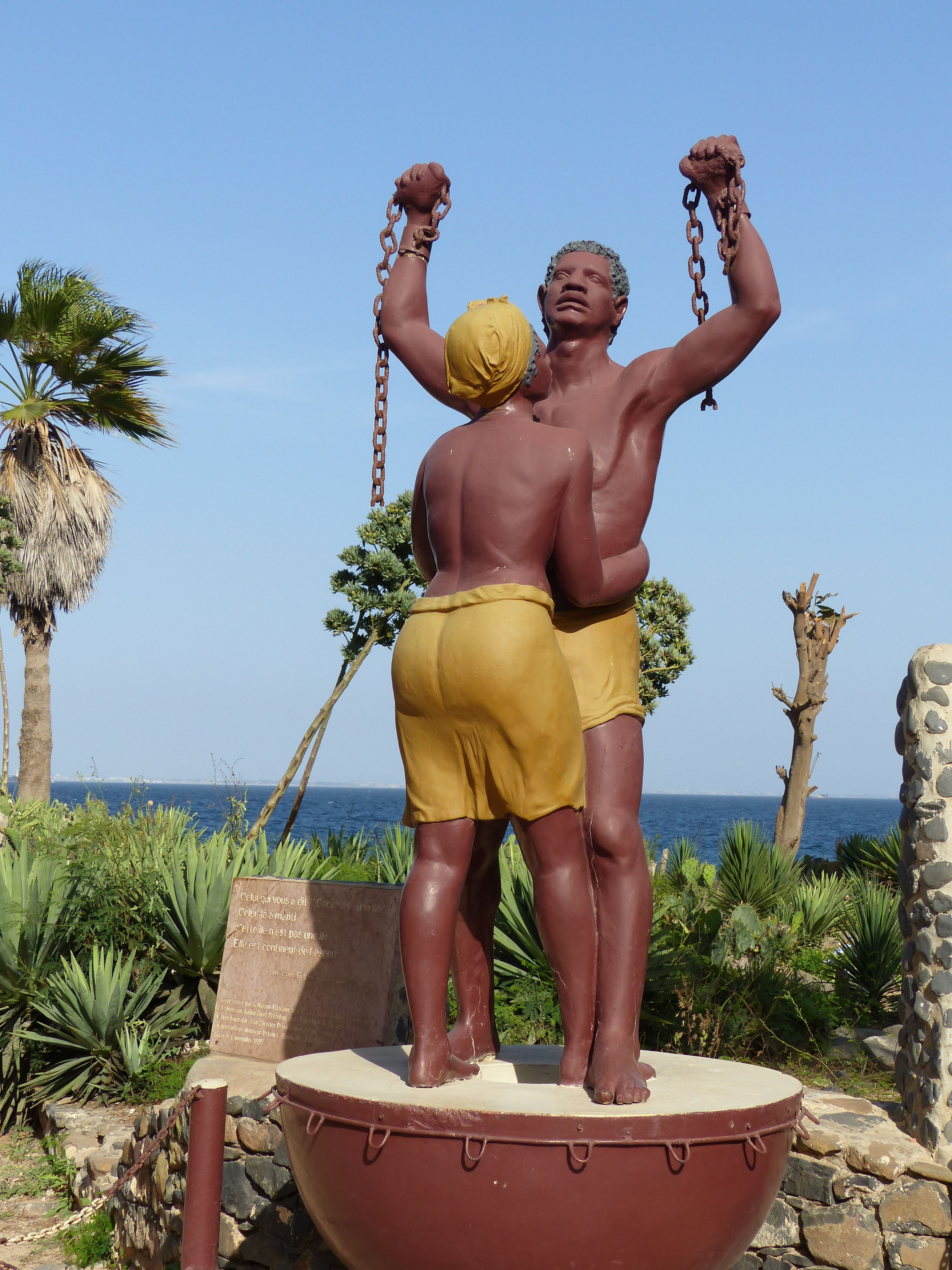
The next day, we cabbed to the chaotic bus station. Before letting us loose in the crowds, our considerate cabbie pantomimed a security briefing. He dramatically patted all his pockets several times and looked around in exaggerated alarm and confusion. He stared grimly at me to make sure this message was received, and waved us cheerily on our way.
We were looking for the sept-places bound for Banjul. A sept-place is an old (and I mean really, really old) station wagon, unfit for the road in every possible way.
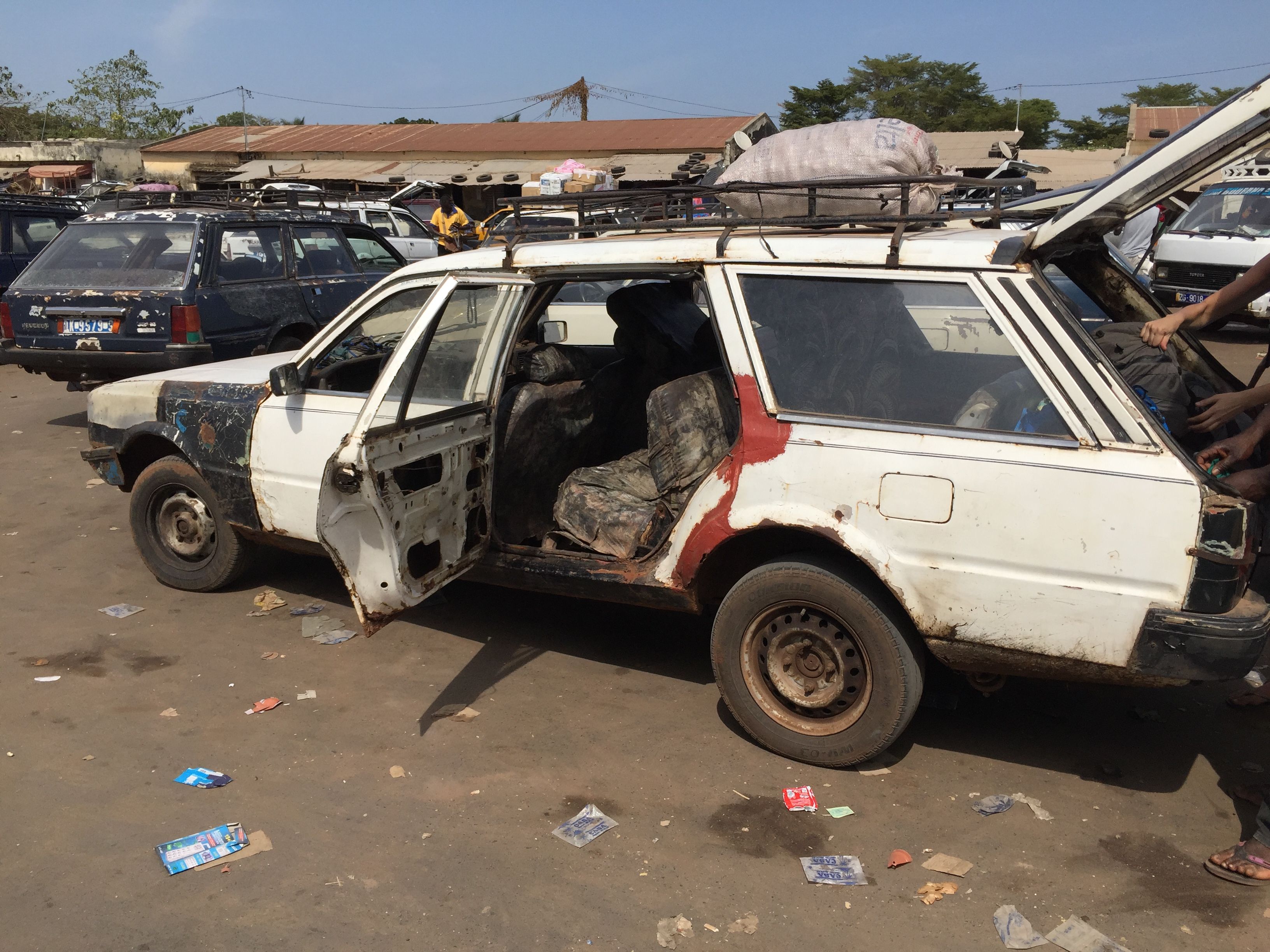
We piled into one with 5 other passengers: surprisingly, the name sept-place – seven seater – is more or less respected, if you don’t count the driver and 3 kids also in the car. With a heap of luggage tied to the roof, we set off at a fast clip and zoomed down the highway. Oyv and I were the only passengers digging down under the seats hoping for seatbelts (a totally futile exercise) and lavishly applying sunscreen.
We were heading for Senegal’s Cassamance region and we figured the fastest way to get there meant cutting straight across The Gambia, a sliver of a country sometimes no more than 35 km across, surrounded entirely by Senegal. We’d read that The Gambia is ‘a splinter in Senegal’s side, or the tongue that makes it speak’, depending on who you talk to. We talked to a lot of Gambians and for us, it’s definitely the latter. In The Gambia, once a British colony, they speak English and life instantly became a lot easier for us.
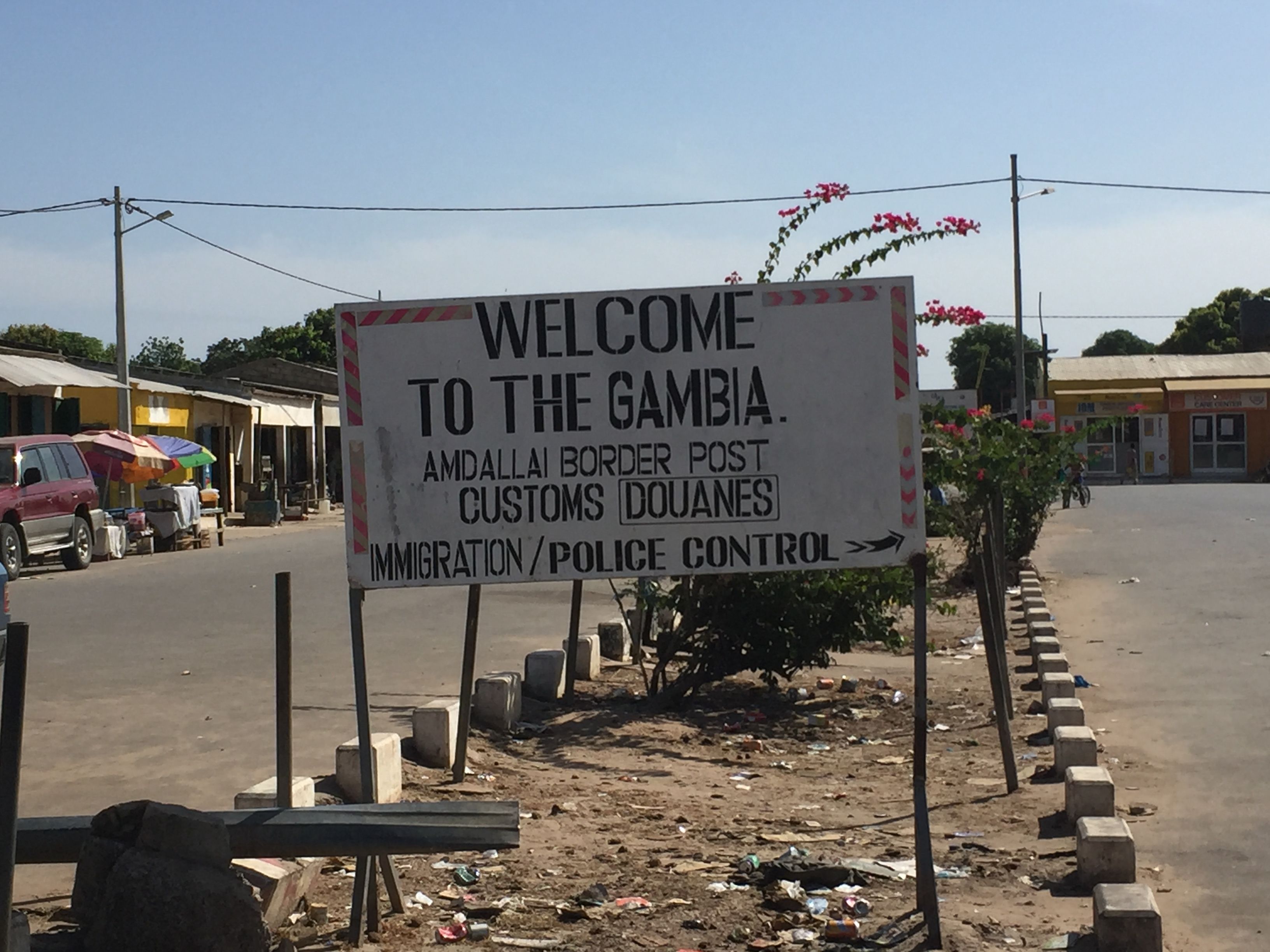
We went looking for a place to stay in Banjul, the tiny capital city. A man lying on a mattress in the street out front of the Princess Diana Hotel did not get up, yet nevertheless welcomed us with a regal sweep of his arm towards the door, and so we checked in.
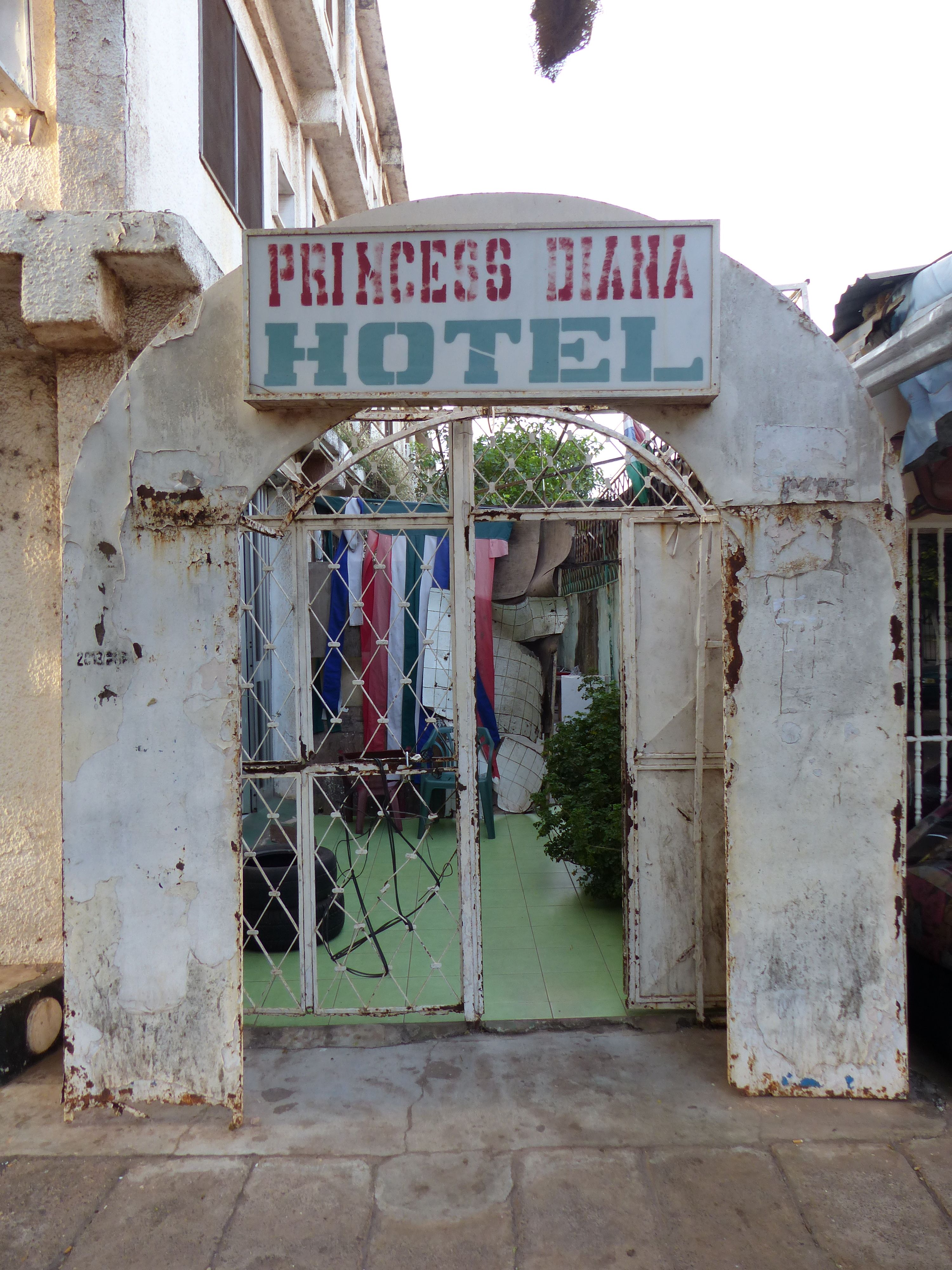
We were soon befriended by the local hangers-on outside. Tommy and Bobby pulled up chairs for us, made us tea, and shared their dinner. We sat around for a couple of hours, talking and laughing, and quickly learned Bobby’s favourite – and The Gambia’s famous – phrase ‘It’s nice to be nice’.
The ‘Smiling Coast’ of every tourist advert, The Gambia does a booming trade in mass market tourism, focused around the Senegambia Strip. Big hotels, restaurants and bars clutter the long beach. Musicians drum and dance, and hawkers flog horse rides and wooden souvenirs.
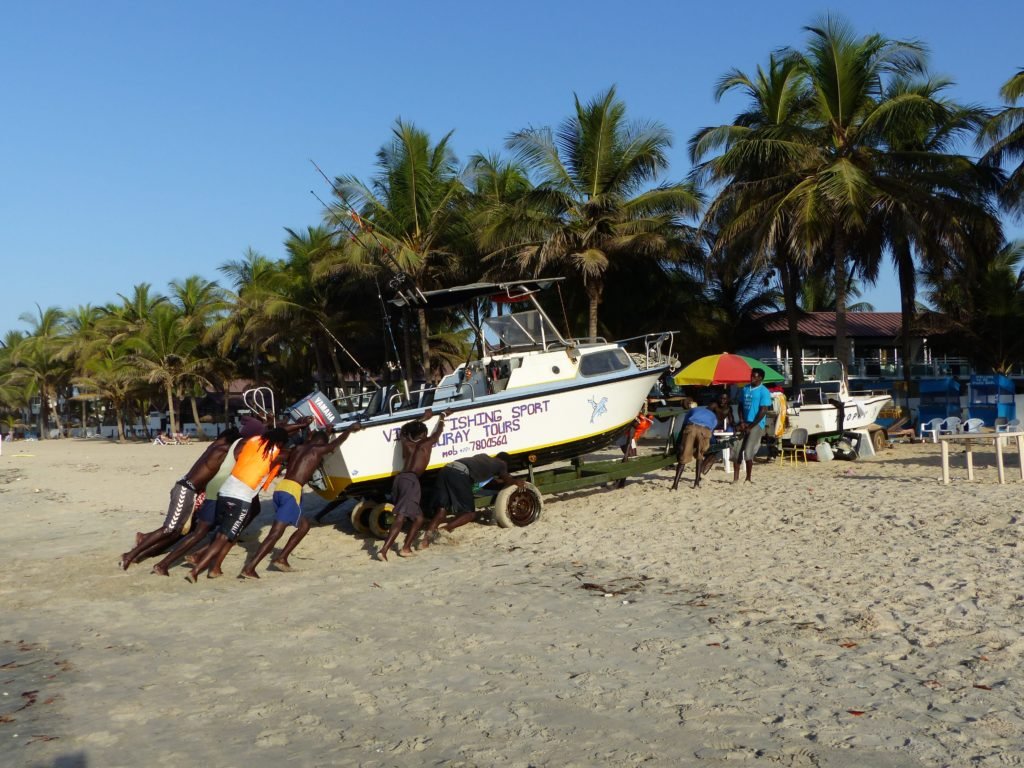
Along with cheap drinks and questionable food, we saw the darker side to The Gambia’s tourist industry: the ‘Bumsters’. Counterparts to the young local girls seen hand-in-hand with old western men in many parts of Southeast Asia, Bumsters are young local guys with middle-aged European sugar mamas. When they haven’t got a lady friend on the go, Bumsters lurk outside hotels and try persistently to attach themselves as guides – wanted, needed, or not – to any passing tourist. Apparently, women visiting alone can expect steady attention and dedicated pursuit from these guys who, on the other hand, are only responding to an apparently significant demand.
But, ‘It’s nice to be nice’ is definitely The Gambia’s slogan. Besides our friendly acquaintances at the Princess Di, everywhere we go we find a smiling person who will help us out or just pass the day with a bit of chit chat. And hey, the Bumsters and hustlers are pretty nice too, after all.
Our main motive in travelling through the Gambia was to visit the two very casual embassies of Sierra Leone and Guinea-Bissau. Embassies tend to move around here, and so they were not at the last known addresses we’d found online. Determining the actual locations involved a lengthy chat with the guy at the shop where we ate breakfast who consulted a police officer, a few taxi drivers and some pedestrians in the street. We are used to this sort of thing: we don’t have any business to mind anymore because everyone else minds it for us. Finding the embassies was the hard part; our visas processed surprisingly fast, given the amount of fuss when we tried to apply in advance from home. It seems the closer you get to the country in question , the more lax the rules become. No one demanded references, invitations, plane tickets, proposed itineraries, or proof of funds. One consular officer dismissed my proffered yellow fever vaccination certificate with a bored wave of his hand. We aren’t the only ones looking for visas either…I’m now penpals with a police officer working at one of the embassies who is at least as keen on my country as I am on his.
Happy with these two new visa labels in our passports, we were ready to carry on. The owner of the Princess Diana hotel spontaneously volunteered to drive us two towns over and dropped us off at the market, wishing us a safe journey – because, you know, it’s nice to be nice. We wrestled our backpacks into yet another crowded sept-place, and set off to the next border with Senegal.
Read More
For more of our adventures (and misadventures) in Senegal, check out the rest of my stories from the road. To help you out with the details, I’ve also written a travel guide about Senegal.
